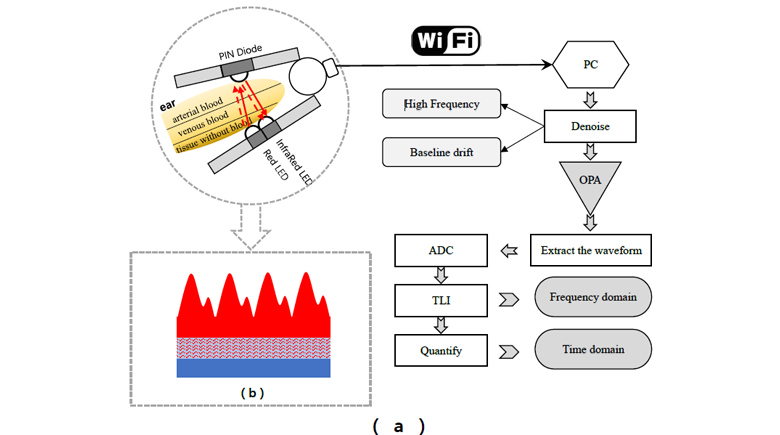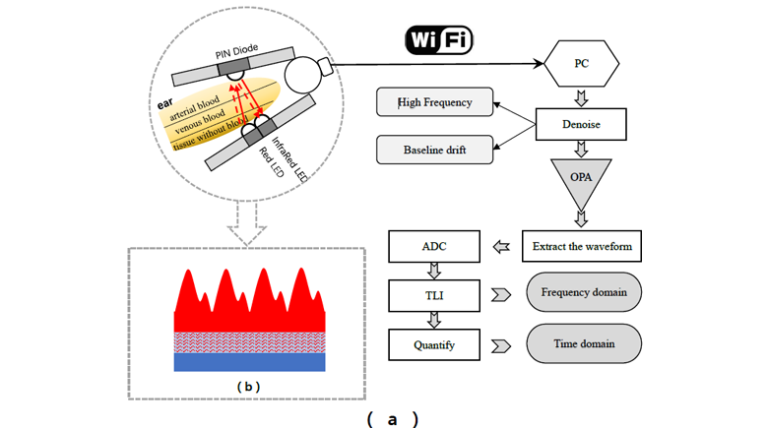
In this paper, thorough improvement of pulse monitoring and analysis equipment with a headset structure is presented. In order to study the most suitable infrared wavelength for the acquisition of the pulse wave at the earlobe, Monte Carlo simulation was adapted. Both high frequency noise and baseline drift, generated in the signal acquisition process, are considered. To further optimize the system design and improve accuracy, for the sensor’s dimensional drift, the corresponding compensation was carried on in the software. This paper introduced nonlinear quantization, especially in terms of very weak pulse signal, in the time domain analysis process. A quick extraction method named table look-up combing with interpolation was utilized to obtain frequency domain information whose processing speed can be increased by about 30 times compared with fast Fourier transformation setting the sampling point as 300. The results demonstrated the sensor’s excellent performance in pulse signal acquisition whose maximum residual is less than 0.004 mV. The test on a random sample of 300 people indicates that the system had high correlation with reference, validating the system accuracy is extremely high. Overall, this paper provides a practical pulse monitoring and analysis system with high precision and processing speed that can be widely applied in the field of health management or medical measurement.

